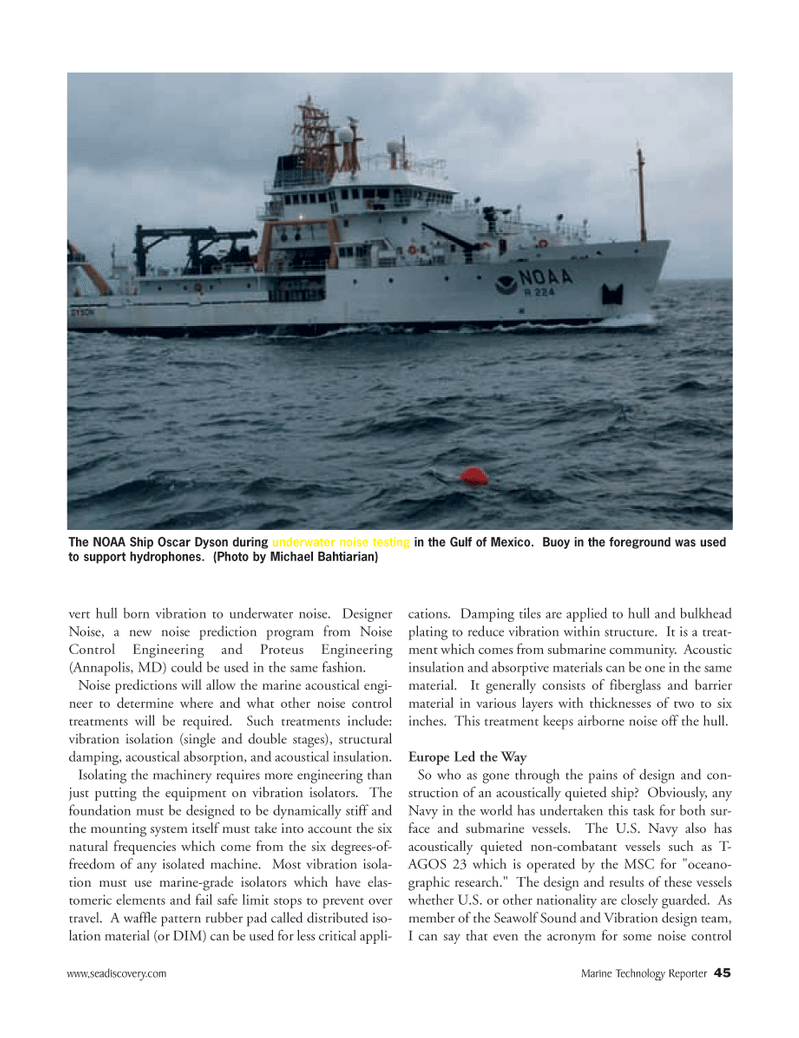
Page 44: of Marine Technology Magazine (July 2005)
Read this page in Pdf, Flash or Html5 edition of July 2005 Marine Technology Magazine
www,seadiscovery.com Marine Technology Reporter 45 vert hull born vibration to underwater noise. Designer
Noise, a new noise prediction program from Noise
Control Engineering and Proteus Engineering (Annapolis, MD) could be used in the same fashion.
Noise predictions will allow the marine acoustical engi- neer to determine where and what other noise control treatments will be required. Such treatments include: vibration isolation (single and double stages), structural damping, acoustical absorption, and acoustical insulation.
Isolating the machinery requires more engineering than just putting the equipment on vibration isolators. The foundation must be designed to be dynamically stiff and the mounting system itself must take into account the six natural frequencies which come from the six degrees-of- freedom of any isolated machine. Most vibration isola- tion must use marine-grade isolators which have elas- tomeric elements and fail safe limit stops to prevent over travel. A waffle pattern rubber pad called distributed iso- lation material (or DIM) can be used for less critical appli- cations. Damping tiles are applied to hull and bulkhead plating to reduce vibration within structure. It is a treat- ment which comes from submarine community. Acoustic insulation and absorptive materials can be one in the same material. It generally consists of fiberglass and barrier material in various layers with thicknesses of two to six inches. This treatment keeps airborne noise off the hull.
Europe Led the Way
So who as gone through the pains of design and con- struction of an acoustically quieted ship? Obviously, any
Navy in the world has undertaken this task for both sur- face and submarine vessels. The U.S. Navy also has acoustically quieted non-combatant vessels such as T-
AGOS 23 which is operated by the MSC for "oceano- graphic research." The design and results of these vessels whether U.S. or other nationality are closely guarded. As member of the Seawolf Sound and Vibration design team,
I can say that even the acronym for some noise control
The NOAA Ship Oscar Dyson during underwater noise testing in the Gulf of Mexico. Buoy in the foreground was used to support hydrophones. (Photo by Michael Bahtiarian)
MTR#1 (33-48).qxd 7/19/2005 10:02 AM Page 45

 43
43

 45
45
